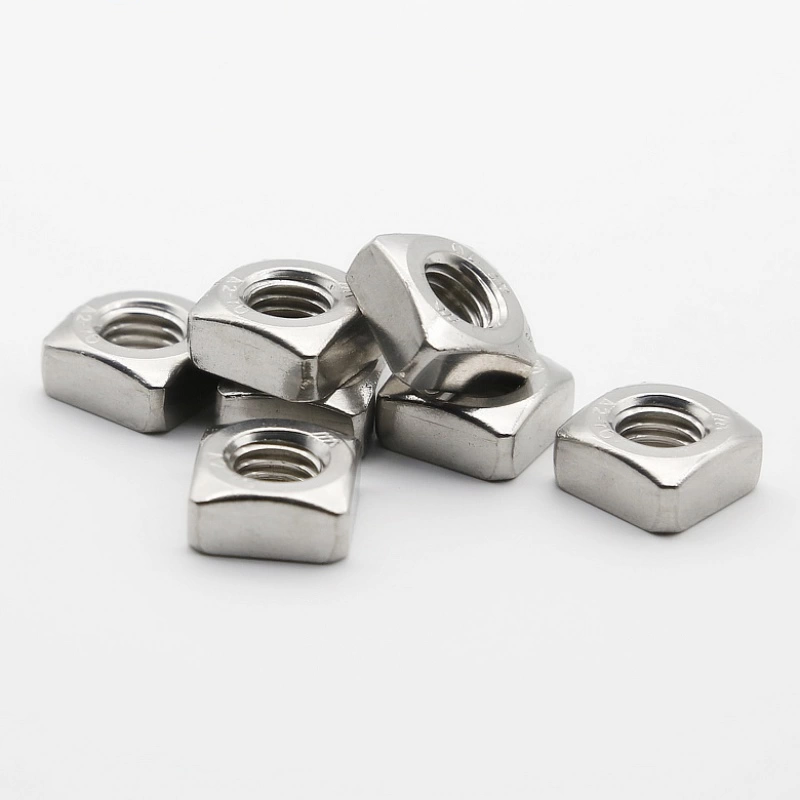

M12 1.75 Flange Nut Specifications and Applications for Optimal Performance
Sep . 30, 2024 21:50 Back to list
M12 1.75 Flange Nut Specifications and Applications for Optimal Performance
Understanding M12 1.75 Flange Nut Features, Applications, and Benefits
When it comes to fastening technology, nuts play a vital role in creating secure connections between various components. Among the plethora of options available, the M12 1.75 flange nut stands out as a popular choice due to its unique features and applications. In this article, we will delve into what an M12 1.75 flange nut is, its characteristics, typical uses, and the benefits it offers.
What is an M12 1.75 Flange Nut?
The term M12 refers to the metric size of the nut, specifically the nominal diameter of 12 millimeters. The 1.75 indicates the pitch of the threads. In metric terminology, this means that the distance between adjacent threads is 1.75 millimeters. The flange design is an additional feature that distinguishes this nut from standard nuts, combining both a nut and a washer in one component. The flange provides a larger surface area that helps distribute the load over a wider area, reducing the risk of damage to the workpiece.
Features of the M12 1
.75 Flange Nut1. Integrated Flange The primary feature of the M12 1.75 flange nut is its built-in flange that provides excellent stability and load distribution. This minimizes the possibility of the nut loosening due to vibrations or dynamic loading.
2. Material Diversity Flange nuts can be made from various materials, including steel, stainless steel, aluminum, and plastic. The choice of material often depends on the application, environmental factors, and required strength.
3. Thread Design The M12 1.75 flange nut features a metric thread design, making it compatible with M12 bolts and other metric fasteners. The precise threading ensures a tight fit, contributing to the overall integrity of the connection.
4. Corrosion Resistance Many flange nuts are treated or coated to provide resistance against rust and corrosion, especially if used in outdoor or harsh environments. This enhances their lifespan and performance.
5. Easy Installation The flange design facilitates easier installation, as it reduces the number of components required (such as separate washers) and often allows for simple hand tightening without the need for specialized tools.
Applications of M12 1.75 Flange Nuts
The M12 1.75 flange nut is versatile and finds application across various industries, including
m12 1.75 flange nut

- Automotive Used extensively in automotive assembly, where secure fastening is crucial for safety and performance. - Construction Essential for securing structural components, roofing systems, and framing, where load-bearing is a concern.
- Manufacturing Employed in machinery and industrial equipment, ensuring that moving parts are securely fastened.
- Electronics In some cases, flange nuts are used in electronic housings, providing a secure connection while allowing for easy assembly and disassembly.
Benefits of Using M12 1.75 Flange Nuts
1. Enhanced Stability The flange provides stability and ensures that the bolt does not pull through the material, which is especially beneficial in softer or more delicate materials.
2. Reduced Risk of Loosening The increased surface area and contact provided by the flange helps to prevent vibration-induced loosening, making it an ideal choice for applications where movement is expected.
3. Time and Cost Efficiency The combination of nut and washer minimizes the number of components needed, streamlining inventory and reducing installation time.
4. Improved Performance The secure fastening properties enhance the performance of assemblies, leading to safer and more durable constructions.
5. Versatility With various materials and finishes available, these nuts can be tailored to meet the specific needs of different applications.
Conclusion
The M12 1.75 flange nut is a robust and versatile fastening component that offers numerous advantages across a wide range of applications. Its design not only enhances stability and load distribution but also provides significant time and cost efficiencies. Whether in automotive, construction, or electronic applications, the M12 1.75 flange nut continues to be a reliable choice for engineers and contractors worldwide. Understanding its features and benefits can guide you in making informed decisions when selecting fastening solutions for your projects.
Latest news
-
High-Strength Hot Dip Galvanized Bolts - Hebei Longze | Corrosion Resistance, Customization
NewsJul.30,2025
-
Hot Dip Galvanized Bolts-Hebei Longze|Corrosion Resistance&High Strength
NewsJul.30,2025
-
High-Strength Hot-Dip Galvanized Bolts-Hebei Longze|Corrosion Resistance&High Strength
NewsJul.30,2025
-
Hot Dip Galvanized Bolts-Hebei Longze|Corrosion Resistance&High Strength
NewsJul.30,2025
-
Hot Dip Galvanized Bolts - Hebei Longze | Corrosion Resistance, High Strength
NewsJul.30,2025
-
High-Strength Hot Dip Galvanized Bolts-Hebei Longze|Corrosion Resistance, Grade 8.8
NewsJul.30,2025

